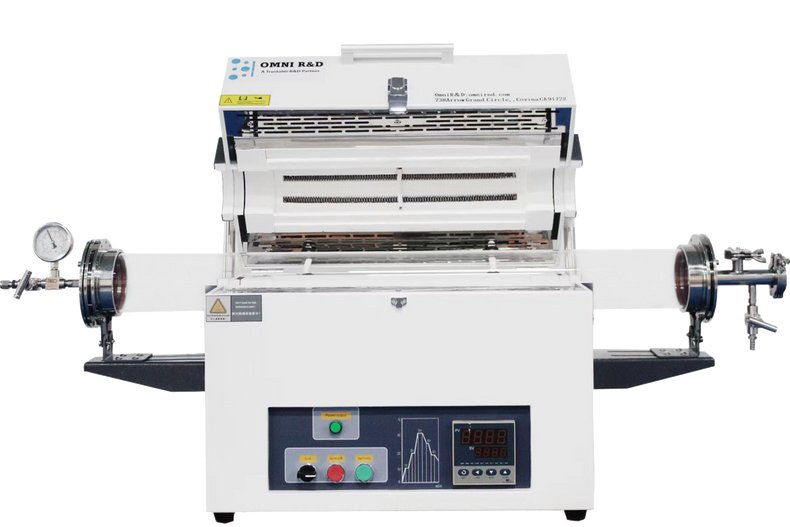Tube furnaces are cylindrical heating devices used in various industrial and laboratory applications. These furnaces consist of a closed cylindrical tube made of ceramic or metal, which is heated using an electric resistance element or a gas burner. Tube furnaces are widely used in material science, chemistry, metallurgy, and other fields that require high-temperature heat treatment and controlled atmosphere.
In this blog, we will discuss the different types of tube furnaces, their applications, and some of their key features.
Types of Tube Furnaces:
There are several types of tube furnaces, classified based on their heating source, temperature range, and other features. Some of the commonly used types of tube furnaces are:
Electric Tube Furnaces: These furnaces use an electric resistance element, usually made of Kanthal or Silicon Carbide (SiC), to heat the tube. Electric tube furnaces can achieve high temperatures up to 1800°C and provide a uniform temperature distribution across the tube.
Gas Tube Furnaces: These furnaces use natural gas, propane, or other gases as the heating source. Gas tube furnaces are often used in heat-treating applications and can achieve temperatures up to 1100°C.
Split Tube Furnaces: These furnaces have a split design, where the tube can be opened and closed for easy loading and unloading of samples. Split tube furnaces are commonly used in laboratory applications.
Vacuum Tube Furnaces: These furnaces are designed for high-temperature applications under vacuum or inert gas atmosphere. Vacuum tube furnaces are often used for sintering, annealing, and crystal growth of materials.
Applications of Tube Furnaces:
Tube furnaces are used in various applications, including:
Heat Treatment of Metals: Tube furnaces are used for heat treating metals such as steel, aluminum, and copper. The high-temperature heating process improves the mechanical properties of these metals, making them stronger and more durable.
Material Science: Tube furnaces are commonly used in material science research for the synthesis and processing of materials. They are used for annealing, sintering, and crystal growth of materials such as ceramics, semiconductors, and superconductors.
Chemical Synthesis: Tube furnaces are used in chemical synthesis applications, such as pyrolysis and calcination, to convert precursor materials into the desired product. They are also used for the purification and drying of chemicals.
Environmental Testing: Tube furnaces can be used for environmental testing of materials, such as simulating high-temperature and high-pressure conditions.
Key Features of Tube Furnaces:
Some of the key features of tube furnaces are:
Temperature Control: Tube furnaces can provide precise temperature control with a high degree of accuracy, usually within a range of ±1°C.
Programmable Settings: Many tube furnaces are equipped with programmable settings that allow users to set the temperature ramp rate, hold time, and other parameters.
Safety Features: Tube furnaces are equipped with safety features such as over-temperature protection and power failure protection.
Atmosphere Control: Some tube furnaces are equipped with an atmosphere control system that allows users to control the gas flow and pressure inside the tube.
Conclusion:
Tube furnaces are versatile heating devices used in various industrial and laboratory applications. They can achieve high temperatures and provide a uniform temperature distribution across the tube. Tube furnaces are used for heat treatment of metals, material science research, chemical synthesis, and environmental testing. With their precise temperature control and safety features, tube furnaces are essential tools for researchers and engineers in many fields.

